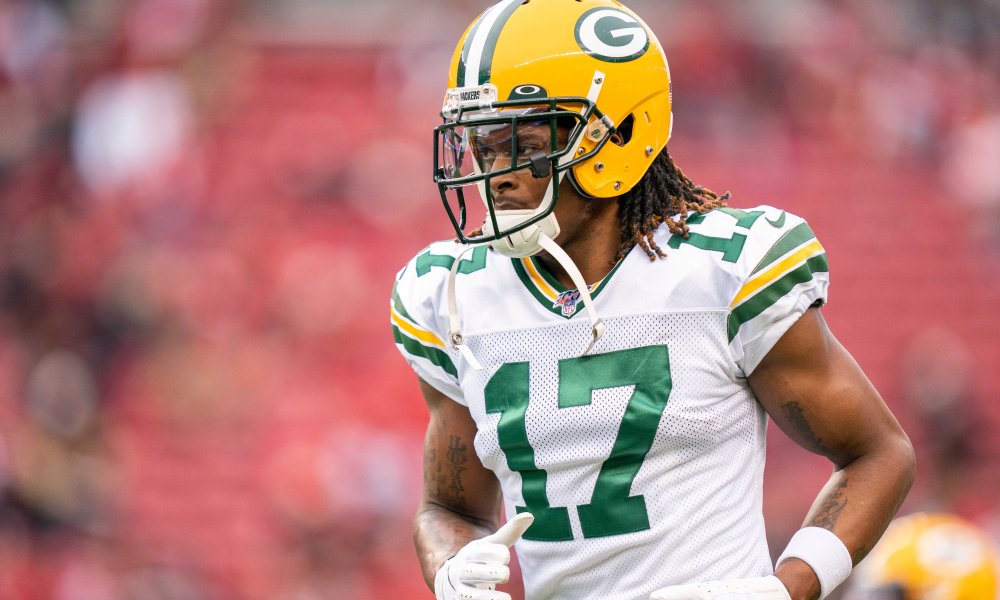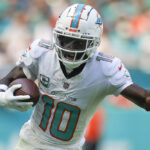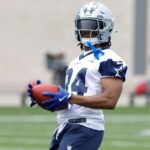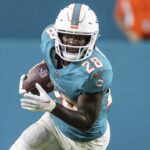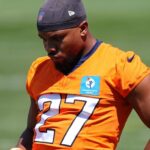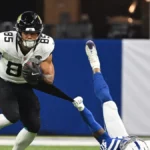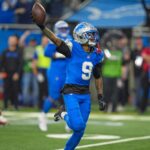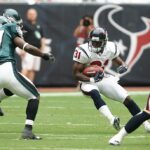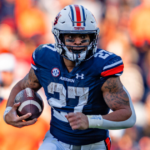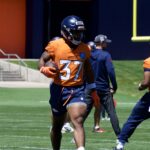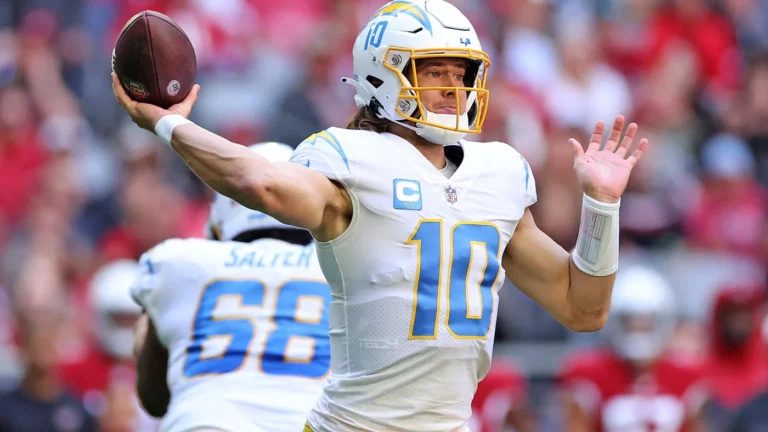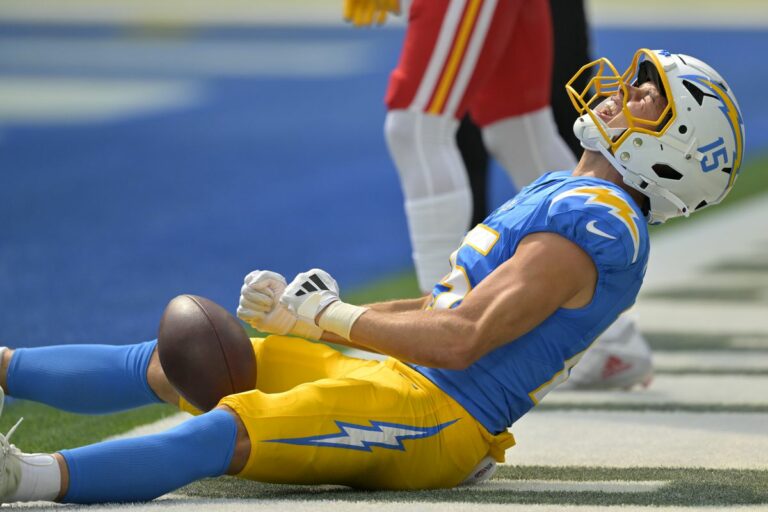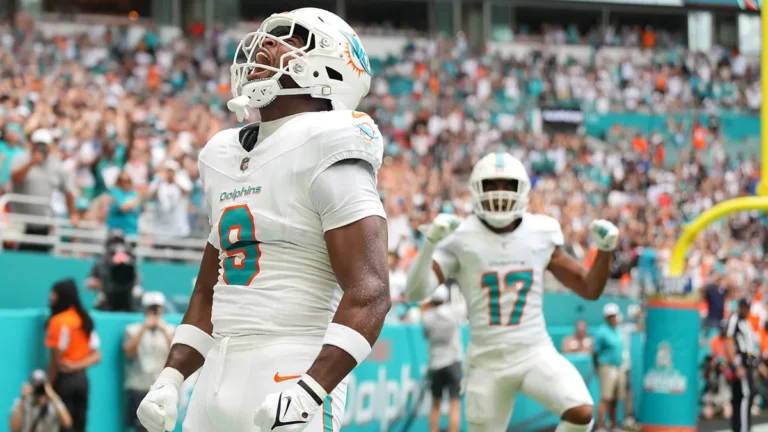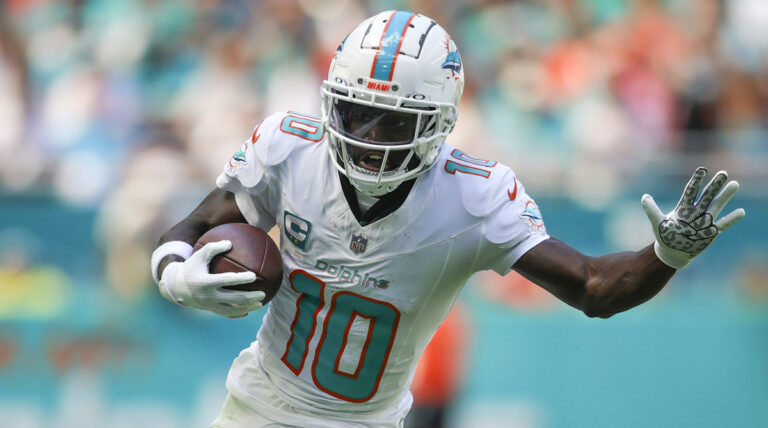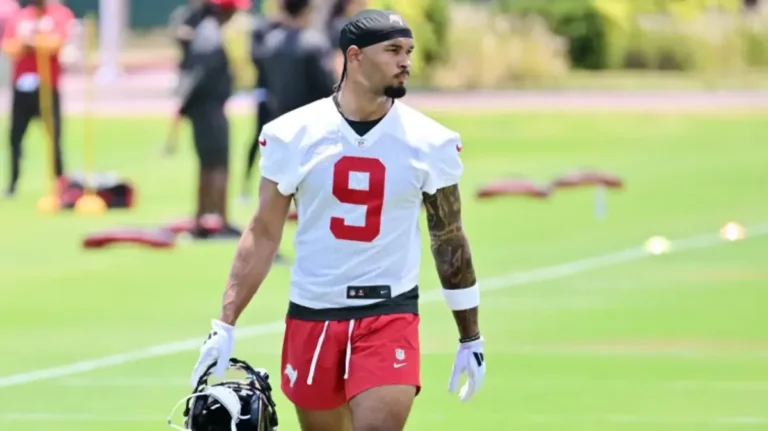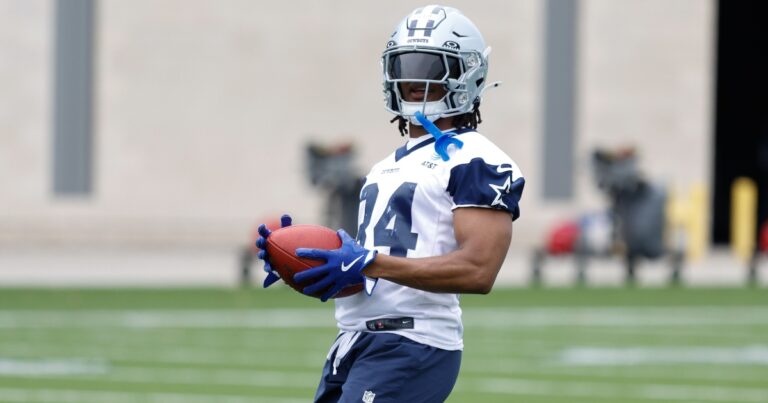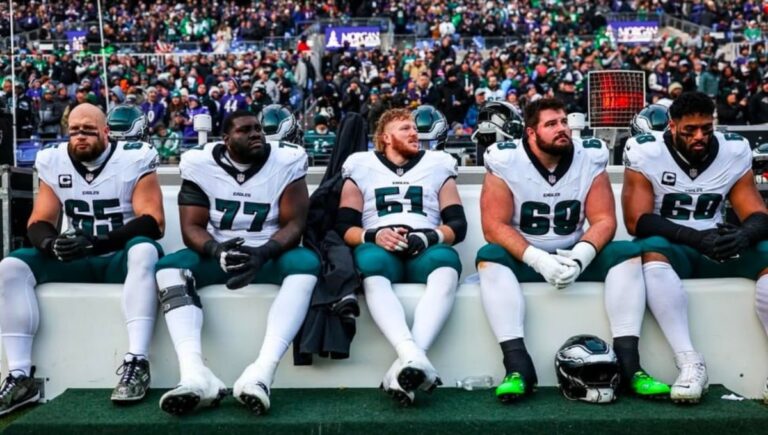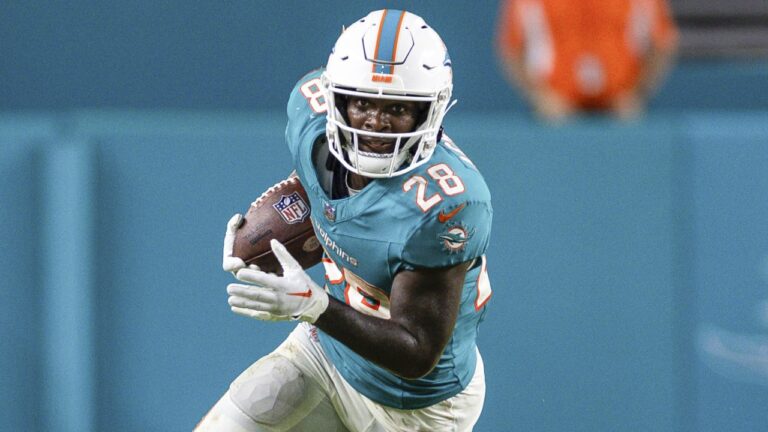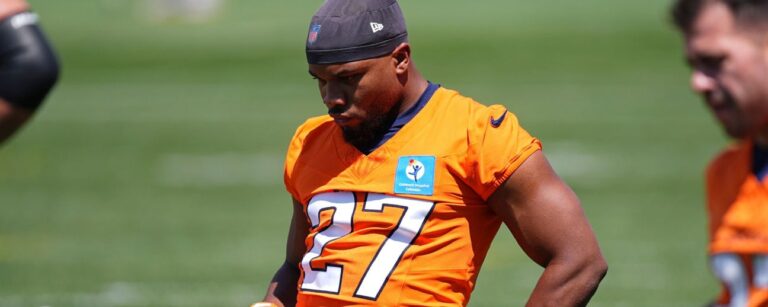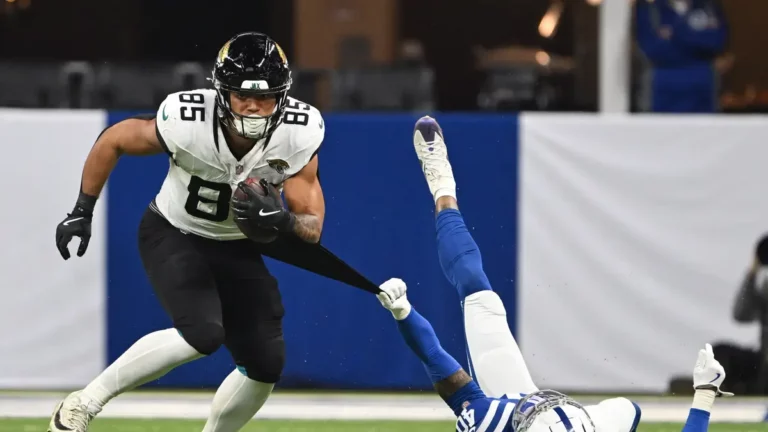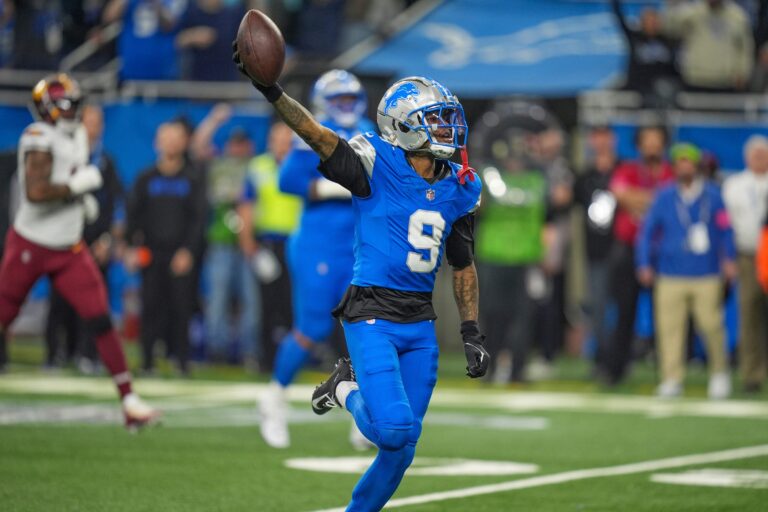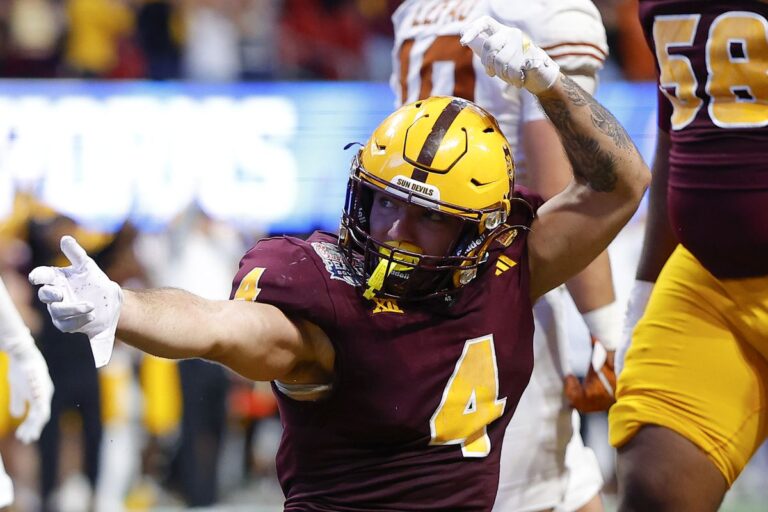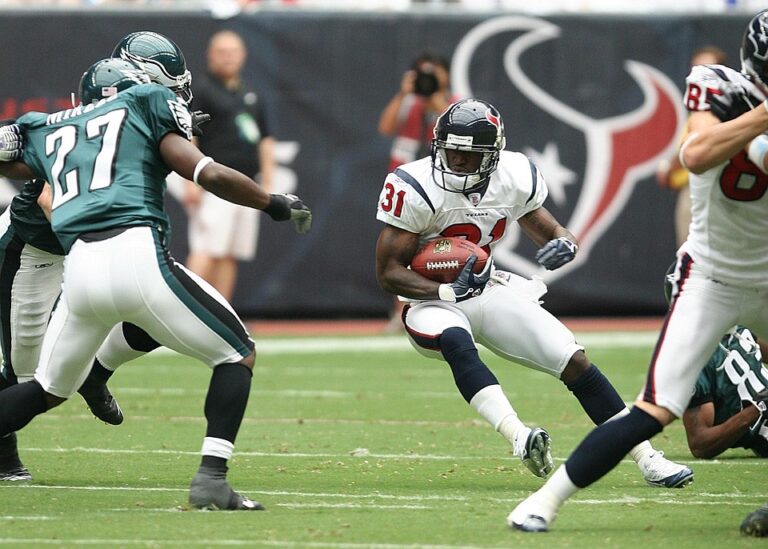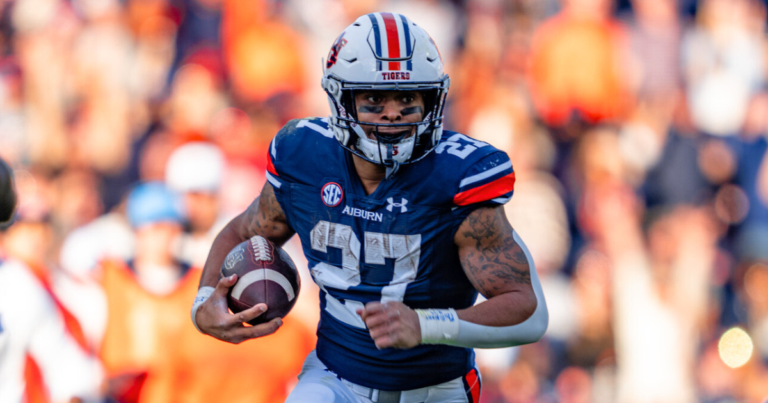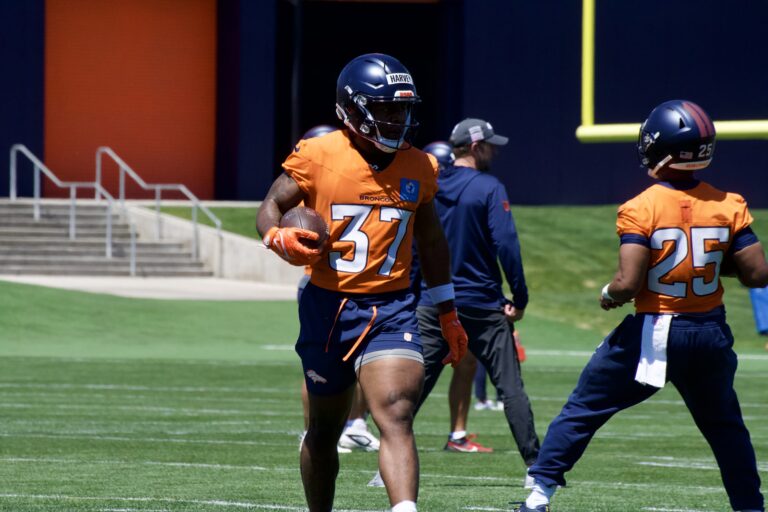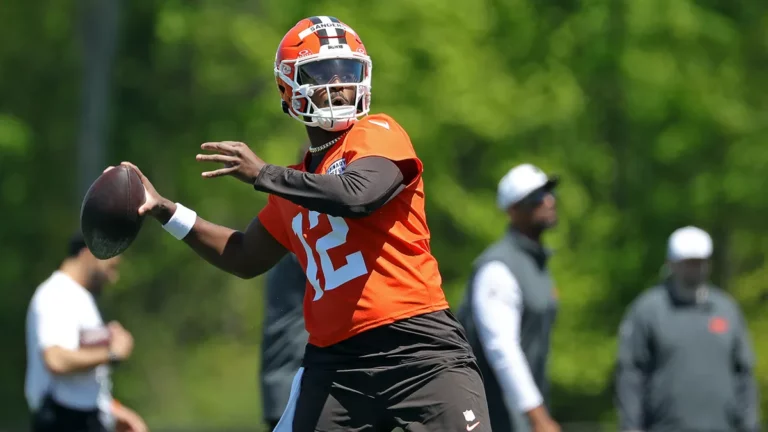Your 2020 fantasy football draft is coming up. You begin looking for strategies to gain an edge against your opponents. The draft begins, and quickly, you notice a trend… running backs are flying off the board right from the start. And why shouldn’t they?
Drafting running backs early, in general, is an optimal strategy, as evidenced in the following table:
Drop-off Rate Per Player by Group Ranking
PPR scoring by points-per-season, 2019
(All TD’s = 6 points)
QB1 — 7.71
QB2 — 4.08
QB1/2 — 6
RB1 — 8.22
RB2 — 5.18
RB3 — 2.35
RB1/2 — 6.56
RB2/3 — 3.77
RB1/2/3 — 5.08
WR1 — 3.87
WR2 — 2.11
WR3 — 3.37
WR1/2 — 2.91
WR2/3 — 2.74
WR1/2/3 — 3.07
TE1 (top half) — 7.7
TE1 (bottom half) — 9.28
TE1 — 8.65
TE2 — 3.74
TE1/2 — 5.97
K1 — 3.64
DEF1 — 3.9
Standard Scoring
RB1 — 8.82
RB2 — 3.98
RB3 — 2.78
RB1/2 — 6.18
RB2/3 — 3.38
RB1/2/3 — 4.98
WR1 — 3.32
WR2 — 1.92
WR3 — 1.35
WR1/2 — 2.55
WR2/3 — 1.63
WR1/2/3 — 2.13
TE1 (top half) — 4.68
TE1 (bottom half) — 7.93
TE1 — 6.03
TE2 — 1.81
TE1/2 — 4
Note: Lamar Jackson, Christian McCaffrey, Michael Thomas, Travis Kelce, and New England DEF, top scorers of their position group, were excluded because of how much they would skew the numbers at their respective position
As you can see, fantasy production at the RB position falls quicker than WR, even more so in standard formats. This also shows that even though the drop-off is similar to RB at the QB and TE positions, taking QB or TE early usually means sacrificing a handful of backs and receivers before your next draft pick.
The subsequent drop-off at back and receiver is also greater at QB and TE, since those positions are uncommon picks in the first several rounds. This helps justify the rationale of another popular strategy, waiting until later rounds to draft a QB or TE.
These observations help clarify why many drafts are RB-heavy in rounds one and two, and WR-heavy in rounds 3 & 4. You’ll see this tendency in FantasyPros’ ECR, our 2020 Big Board and Rankings, and most other experts’ rankings. And there’s still more that sheds light on why running backs are such a commodity early in drafts.
The Advantage of Securing Bellcow Backs
Due to the nature of the position, running backs who have a primary role on their team gain a clear and substantial advantage as a fantasy asset over teams that utilize multiple backs. The dynamic is substantial enough that a fantasy team’s success often parallels with the strength of their running backs.
As a result, the world of online fantasy advice is saturated with prioritizing these primary backs. Roto Street Journal is no exception. “Nailing your bell-cow back is the most important factor” in acquiring championship gold according to Jon Jackson.
RSJ’s Jackson Barrett calls them “diamonds“, and you won’t get far with The Wolf before he suggests going RB-RB-RB with your first three draft picks.
So, your draft is starting, you and your 11 buddies are rightfully heeding Roto Street advice, and hence, the first 24 picks are running backs, leaving Michael Thomas sitting there in the third round. But wait, that’s not happening. What gives?
Why Investors Treasure High Dividend Stocks
The attributes that make bell-cow backs so coveted aren’t specific to the RB position. High volume, consistent production, resulting in minimal bust weeks…you can set them, forget them, and work on improving the rest of your roster. Players with these traits act as high dividend stocks.
What are high dividend stocks? In the stock market, they are reliable stocks that yield consistent gains.
“High dividend paying stocks are a really great way to add stability to any portfolio,” said Anthony Montenegro, founder of The Blackmont Group, a Southern California wealth management firm. “The steady income paid from these stocks reduce the impact of price volatility and can contribute to higher average gains over time within a well-diversified portfolio that includes companies with higher growth potential.”
Reducing the impact of volatility is arguably the most important aspect of these stocks. The Forbes article also provides more clarity on why fantasy wolves love to hunt down bell-cow backs…
“Investors are naturally drawn to the reliability of dividend income, which can serve to minimize stock price declines.”
Bell-cows are the definition of fantasy reliability, but fantasy success is not exclusive to reliability at the running back position. It’s a trait that should be desired at any position.
Now, here at RSJ, we love a fitting stock market pun, but “high dividend stocks” is a bit of a mouthful. So for the sake of simplicity, let’s call these reliable, irreplaceable treasures… anchors.
The Importance of Anchors
Once an anchor is set, it won’t budge, because it doesn’t need to budge.
It does its job to hold the ship down while other parts of the ship are tended to. That’s what makes anchors at every position so valuable. Quarterbacks who can’t rely on touchdowns or rushing ability can crush a fantasy team’s week if they bust. Streaming defenses is an inherent liability. No anchor at tight end leaves you flirting with a position whose production falls off quicker than running backs as you go down the rankings.
Having an anchor at each position group helps keep that position group stable.
A wide receiver group without an anchor can be left drifting out into a sea of uncertainty. In 2019, Amari Cooper and Tyler Lockett were starting fantasy receivers. Amari had five weeks of less than 10 PPR points (one per every three weeks), and Lockett had six (one per every 2.7 weeks). They both busted during Week 4, Week 12, and Week 16, and Lockett’s bye week coincided with Amari’s Week 11 bust. Those types of weeks make it nearly impossible for the rest of the team to pick up the slack.
Contrast those two players with DJ Moore and John Brown, both of whom only had two games that registered less than 10 points. Moore had nine games of 15-plus points, finishing as 2019’s WR16, compared to Cooper, who finished as WR10, showing that not all WR1s are considered ‘anchors.’
As the WR20, John Brown’s only 4 games of 15-plus points categorized him as what I call a “bulkhead,” a pillar that can prevent a ship from sinking, an ideal complement to a high-ceiling, yet volatile point producer like Cooper or Lockett.
Moore and Brown were options that were rarely taken before Cooper or Lockett in drafts last season. Their high floors were great buffers against other players’ volatility, players to keep in mind for later rounds if your early picks are productive yet inconsistent. However, only let this be your draft scenario if the board plays out this way.
If given the choice, take the higher floor, even if it might mean fewer games of elite production. That way, you can better afford to chase sleepers or high-ceiling volatility later. Or, you can draft a “bulkhead,” because you want to, not because you have to.
Not everyone would classify the same players as anchors. Check your research, and then…
Decide on Your Anchors
List them out for each position:
QB: Lamar Jackson, Patrick Mahomes, Dak Prescott, Kyler Murray, Russell Wilson, Josh Allen, Matt Ryan, Drew Brees, Carson Wentz
RB: Christian McCaffrey, Saquon Barkley, Ezekiel Elliott, Dalvin Cook, Alvin Kamara, Joe Mixon, Derrick Henry, Clyde Edwards-Helaire, Austin Ekeler, Nick Chubb, Miles Sanders, Kenyan Drake, Josh Jacobs
WR: Michael Thomas, Davante Adams, DeAndre Hopkins, Chris Godwin, DJ Moore, Adam Thielen, Tyreek Hill, Robert Woods, Kenny Golladay, Allen Robinson, Julio Jones
TE: Travis Kelce, George Kittle, Darren Waller, Zach Ertz
DEF: San Francisco, Pittsburgh, Baltimore, New England
Decide on Your Bulkheads
QB: Ryan Tannehill, Teddy Bridgewater, Gardner Minshew
RB: David Johnson, Le’Veon Bell, Melvin Gordon, Kareem Hunt
WR: Courtland Sutton, Tyler Boyd, Jarvis Landry
TE: Hayden Hurst, Jared Cook
DEF: Minnesota, Indianapolis
Incorporate These Players’ ECR/ADP Into Your Draft Strategy
Whether it’s The Wolf’s 2020 Big Board and Rankings, or other rankings/cheat sheets out there, none of them will stray too far from the ECR, and multiple sources of insight are a good way to cover all the bases you can. On comes your draft, you draw pick 11.
With acquiring anchors in mind, it might go something like this:
Format: 12-team, Half PPR, 1QB, 2RB, 2WR, 1TE, 1FLEX, 1K, 1DEF, 6 bench
Pick 11 (1.11) WR Davante Adams, ADP 8
Although Adams’ ADP is 8.0, the only non-RB your bell-cow loving buddies have taken so far is Michael Thomas, so with plenty of RB anchors still available, you grab the clear-cut top receiving option on an Aaron Rodgers-led offense.
Pick 14 (2.02) RB Kenyan Drake, ADP 15
11 of the first 13 picks have been running backs, leaving only Drake and Jacobs from your list of anchors. You go with the fast-paced rising offense in Arizona and take Drake.
Pick 35 (3.11) WR Adam Thielen, ADP 31
With so many bell-cow hunters in this draft, 26 backs have been taken off the board so far. That leaves the opportunity to grab another WR1, and you take a player who could see his highest target total of his career this season.
Pick 38 (4.02) QB Dak Prescott, ADP 47
Lamar and Mahomes are off the board, and with the running back landscape already so thin, it’s time to get quality anchors. The consensus QB3 likely wouldn’t have been there for you in the fifth round.
Pick 59 (5.11) TE Darren Waller, ADP 54
The last tight end left on your list of anchors, as wide receivers are still flying off the board. While the rest of your draft has been largely waiting on QB’s and TE’s, that’s left many flirting with uncertainty and volatility at RB and WR. Meanwhile, you have five anchors through five picks.
Pick 62 (6.02) WR Tyler Boyd, ADP 74
The downside of not running with the pack of bell-cow hunters means that even guys like Cam Akers, Ronald Jones, and J.K. Dobbins are gone through five rounds. Running back anchors are a distant memory, and even your RB bulkheads are long gone in this draft. So when it comes to locking down your FLEX, wide receiver looks like your best bet, especially when there’s a bulkhead that can further solidify your roster.
Pick 83 (7.11) RB James White, ADP 94
Your RB2 slot needs a lot of attention now. Pass-catching backs can provide more of a floor, and high-quality handcuffs now take a higher priority.
Pick 86 (8.02) RB Chase Edmonds, ADP 163
Even with a 14th-round ADP, drafting Edmonds had the utmost importance to make damn sure your RB room wasn’t in shambles in case of a Kenyan Drake injury.
Pick 107 (9.11) TE Mike Gesicki, ADP 122
A high-ceiling, high-uncertainty play. The drafting of Waller allows this, almost completely reducing the risk of drafting a player who at best is a top-5 TE, at worst is a fantasy afterthought. That could be crippling if you were relying on Gesicki as your TE1.
Pick 110 (10.02) DEF San Francisco 49ers, ADP 95
Someone takes the Steelers, the first defense off the board, so it’s time to make sure you grab a defensive anchor.
Pick 131 (11.11) RB Chris Thompson, ADP 193
Slated to be the Jaguars’ passing down specialist with the release of Leonard Fournette. Jacksonville’s likely to see a lot of negative game scripts this season, resulting in more pass plays.
Pick 134 (12.02) RB Nyheim Hines, ADP 188
There’s a lot worse you could do than a pass-catching back in a Philip Rivers-led offense in the 12th round.
Pick 155 (13.11) QB Teddy Bridgewater, ADP 160
Familiarity with OC Joe Brady and a young defense projected to be bad, Teddy has a variety of talent around him and plenty of passing volume to provide a stable floor even if you don’t consider the number of negative game scripts that could arise.
Pick 158 (14.02) K Younghoe Koo, ADP 283
Ah, the art of trying to find a kicker on a team that is good at getting in field goal range, but terrible at punching it in the end zone. The Falcons were tops in the NFL last season at 2.5 field goal attempts per game, and even higher with Koo active at 3.2 per game.
Pick 179 (15.11) WR Larry Fitzgerald, ADP 170
The Kingsbury-Murray era has a year under its belt, and even with the addition of Nuk, the future hall of famer going largely undrafted in fantasy has an opportunity to build on his 11.1 points per game rate in 2019.
The Resulting Team (ECR Rank in Parentheses)
QB Dak Prescott, anchor (QB3)
RB Kenyan Drake, anchor (RB12)
RB James White (RB31)
WR Davante Adams, anchor (WR2)
WR Adam Thielen, anchor (WR11)
TE Darren Waller, anchor (TE5)
FLEX Tyler Boyd, bulkhead (WR30)
K Younghoe Koo (K14)
DEF San Francisco, anchor (DEF1)
Bench
RB Chase Edmonds, handcuff (RB51)
TE Mike Gesicki (TE12)
RB Chris Thompson (RB49)
RB Nyheim Hines (RB53)
QB Teddy Bridgewater, bulkhead (QB26)
WR Larry Fitzgerald (WR66)
Observations
While waiting until the seventh round to grab an RB2 might have given the rest of your bell-cow loving league mates a panic attack, it’s undeniable that anchoring down at so many other spots left your team in a position to compete with anyone, any week.
All things considered, drafting with anchor strategy shows that going RB-RB, or even RB-RB-RB with your first picks, is not necessarily a bad strategy. Depending on what the draft board is giving you, it can be a fantastic strategy. Drafting running backs early is ideal for many, just not ideal for everybody.
When you and everyone else are chasing bell-cows, how often can you really expect to come out on top in that area? As fantasy nuna-ball legend Obi-Wan Kenobi said, “You can’t win, but there are alternatives.” It’s sound advice, whether you’re drafting against a fleet of bell-cow hunters or a group of alpha-droid hungry Gungans.
What anchor strategy does, is help you remain flexible through your draft. It helps prevent you from being too caught up in strategies like zero-RB, zero-WR, waiting on QB or TE, etc. It helps you not get too in love with particular players, where if there’s plenty of value to wait a round, and another position should take priority, that you know you should swallow the lump in your throat and let the new, sexy name from your favorite NFL team go.
Contrarily, if a player drops at a position you’ve already covered but is sitting there on your anchor list, it forces you to consider them. Anchors are invaluable in the way that they free up the pressure from the rest of your team, and adding even one more further allows your team’s flexibility, without incurring as much of the risk. Drafting another anchor at a position where it wasn’t necessarily needed gives substantial leverage in trade talks, allowing you to give away a player at the same position you took higher, where the improvement to one area of your team is then greater than the loss you’d take at another.
The more anchors you acquire, the more liberal you can be with your waiver wire budget. In this draft example, with so many other positions taken care of, you can justifiably overspend to improve your RB2 spot, whether it’s a Week 1 break-out like 2018’s Phillip Lindsay, or injury to a back whose handcuff has gone undrafted, perhaps such as Dion Lewis, Darrynton Evans, or Giovani Bernard.
Draft time is the earliest time to secure anchors, and you don’t want to wait to prioritize them. By the time you’re being knocked around by unsettled waters, it may be too late. At that point, weighing an anchor could prove useless in saving the ship.
Anchor Strategy as Part of Being a Pack Leader
Here at RSJ, we aim to breed not just fantasy wolves, but pack leaders. Pack leaders know where to draw lines. They know when to look ahead. They’re keen to adjust when circumstances change around them. They know when to avoid temptation and make the best decision for the pack.
Any wolf can devour a bell-cow, standing there, ripe for the taking. Don’t forget to hunt target hogs and other studs wherever they can be found also, and be a pack leader.
